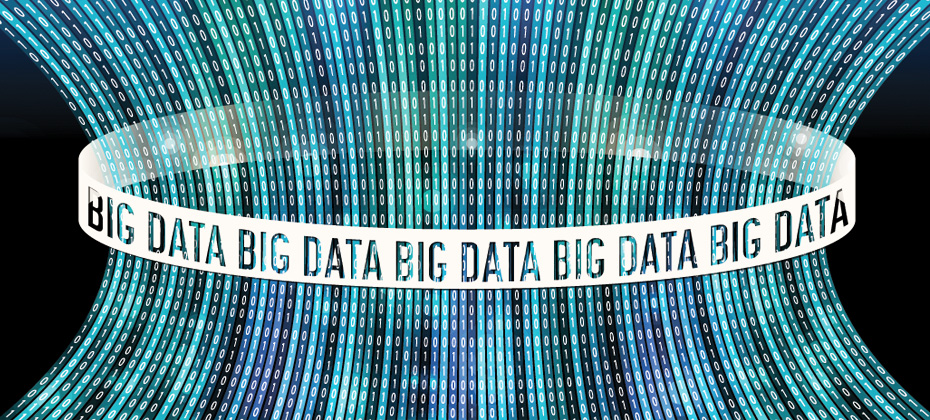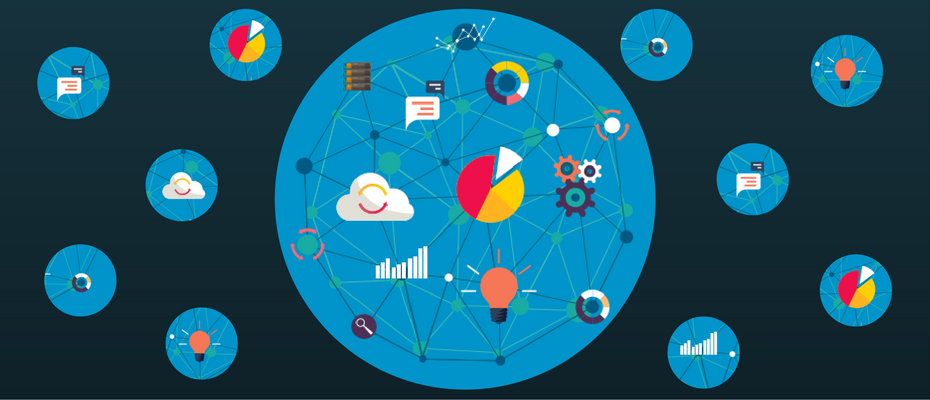Tag: data

Organizations that can mobilize their data assets to power critical business initiatives will see a distinct advantage in the coming years. In fact, most C-level executives (87%) believe data has greatly disrupted their organization’s operations over the past 12 months. Here are more insights from the newly released 2018 global data management benchmark report: As digital transformation efforts proliferate and become commonplace, organizations will need to implement processes and technology that scale with the demands of data-driven business. Read the full report

The auto industry has been riding a wave of prosperity for the past seven years, bouncing back nicely from the 2008 market collapse. But, it looks like rising sales of the past 10 years, are, well...a thing of the past. According to Alix Partners, 2016 sales of 17.5 million units might be the high-water sales mark, at least through 2022. Alix Partners says the next five years sales will range between 15.6 million to 16.8 million annually. Suddenly, it will be challenging for dealers to stay in strong growth mode. How can dealers best react to the tightening market? The Experian white paper “Data Tools Evolve to Give Dealers an Edge in a Tight Sales Market” takes a look at how new and improved data and analytic tools can provide deeper insights to help automotive retailers unlock sales. The paper reviews current market sales statistics, historical sales trends and how dealers reacted during similar market conditions in the past. In addition, the paper provides a look at the challenges faced by automotive retailers, in terms of shrinking gross profit, higher advertising expenses and increased competition. Automotive retailers also will find information on the importance of customer conquesting and a look at technology tools to help provide a deeper understanding and actionable intelligence about local markets. Data and analytics are no longer the private purview of large mega-dealers. The Experian white paper outlines today’s data tools that can be implemented quickly and cost effectively by dealers of any size. To learn more about these trends, download the paper here: https://www.experian.com/automotive/dealerwhitepaper.html

The collections space has been migrating from traditional mail and outbound calls to electronic payment portals, digital collections and virtual negotiators. Now that collectors have had time to test virtual collections, we’ve collected some data points. Here are a few: On average, 52% of consumers who visit a digital site will proceed to a payment schedule if the right offer is made. 21% of the visits were outside the core hours of 8 a.m. to 8 p.m., an indication that traditional business hours don’t always work. Of the consumers who committed to a payment plan, only 56% did it in a single visit. The remaining 44% did so mostly later that day or on a subsequent day. As more financial institutions test this new virtual approach, we anticipate customer satisfaction and resolutions will continue to climb. Get your debt collections right>

Call it big data, smart data or evidence-based decision-making. It’s not just the latest fad, it’s the future of how business will be guided and grow. Here are a few telling stats that show data is exploding and a new age is upon us: Data is growing faster than ever before, and we’re on track to create about 1.7 megabytes of new information per person every second by 2020. The social universe—which includes every digitally connected person—doubles in size every two years. By 2020, it will reach 44 zettabytes or 44 trillion gigabytes, according to CIO. In 2015, more than 1 billion people used Facebook and sent an average of 31.25 million messages and viewed 2.77 million videos each minute. More than 100 terabytes of data is uploaded daily to the social channel. By 2020, more than 6.1 billion smartphone users will exist globally. And there will be more than 50 billion smart connected devices in the world, all capable of collecting, analyzing and sharing a wealth of data. More than one-third of all data will pass through or exist in the cloud by 2020. The IDC estimates that by 2020, business transactions on the internet—business-to-business and business-to-consumer—will reach 450 billion per day. All of this new data means we’ll be looking at a whole new set of possibilities and a new level of complexity in the years ahead. The data itself is of great value, however, lenders need the right automated decisioning platform to store, collect, quickly process and analyze the volumes of consumer data to gain accurate consumer stories. While lenders don’t necessarily need to factor in decisioning on social media uploads and video views, there is an expectation for immediacy to know if a consumer is approved, denied or conditioned. Online lenders have figured out how to quickly capture and understand big data, and are expected to account for $122 billion in lending by 2020. This places more pressure on banks and credit unions to enhance their technology to cut down on loan approval times and move away from various manual touch points. Critics of automated decisioning solutions used in lending cite compliance issues, complacency by lenders and lack of human involvement. But a robust platform enables lenders to improve and supplement their current decisioning processes because it is: Agile: Experian hosts our client’s solutions and decisioning strategies, so we are able to make and deploy changes quickly as the needs of the market and business change, and deliver real-time instant decisions while a consumer is at the point of sale. A hosted environment also means reduced implementation timelines, as no software or hardware installation is required, allowing lenders to recognize value faster. A data work horse: Internal and external data can be pulled from multiple sources into a lender’s decisioning model. Lenders may also access an unlimited number of scores and attributes—including real-time access to credit bureau data—and integrate third-party data sources into the decisioning engine. Powerful: A robust decision engine is capable of calculating numerous predictive attributes and custom scoring models, and can also test new strategies against current decision models or perform “what if” simulations on historical data. Data collection, storage and analysis are here to stay. As will be the businesses which are savvy enough to use a solution that can find opportunities and learnings in all of that complex data, quickly curate the best possible actions to take for positive outcomes, and allow lenders and marketers to execute on those recommendations with the click of a button. To learn more about Experian’s decisioning solutions, you can additionally explore our PowerCurve and Attribute Toolbox solutions.

Risk analysts are insatiable consumers of big data who require better intelligence to develop market insights, evaluate risk and confirm business strategies. While every credit decision, risk assessment model or marketing forecast improves when it is based on better, faster and more current data, leveraging large data sets can be challenging and unproductive. That’s why Experian added a new functionality to its Analytical Sandbox, giving clients the flexibility they need to analyze big data efficiently. Experian’s Analytical Sandbox now utilizes H2O –an open source machine learning and deep learning platform that can model and predict with high accuracy billions of rows of high-dimensional data from multiple sources in various formats. Through machine learning and advanced predictive modeling, the platform enables Experian to better provide on-demand data insights that empowers analysts with high-quality intelligence to inform regional trends, provide consumer transactional insight or expose marketing opportunities. As a hosted service, Sandbox is offered as a plug-and-play, meaning no internal development is required. Clients can instantly access the data through a secure Web interface on their desktop, giving users access to powerful artificial and business intelligence tools from their own familiar applications. No special training is required. “AI monetizes data,” said SriSatish Ambati, CEO of H2O.ai. “Our partnership with Experian democratizes and delivers AI to the wider community of financial and risk analysts. Experian's analytics sandbox can now model and predict with high accuracy billions of rows of high-dimensional data in mere seconds.” Through H2O and the Experian Sandbox, machine learning and predictive analytics are giving risk managers from financial institutions of all sizes the ability to incorporate machine learning models into their own big data processing systems.

We’re excited to announce Family Account Management: a new feature available for our partners that makes it easy for their subscribers to extend identity protection services to family and friends. Family Account Management allows our partners to offer quick and easy enrollment, enabling new subscribers to opt in to a family plan by inputting family or friends’ email addresses within their portal. Subscribers can invite anyone of the age of 18 to join. Every family has different security needs and preferences. This feature offers plan options that can be configured to match the primary subscriber’s current enrolled services, or customized to include a set of services that best suits each family’s needs. The Consumer Sentinel Network, a division of the Federal Trade Commission, reported over 1.2 million fraud-related complaints in 2015. With identity fraud on the rise, we need to be more vigilant than ever before and take steps to improve our own security and the security of our loved ones. We all have unique identity elements, including birthday, email address, and Social Security number, and monitoring one person’s identity elements won’t minimize risk for other family members. That’s why Family Account Management is so important, allowing subscribers to extend coverage for what matters most – family. “Families are more connected than ever before, but with more ways to stay connected, there are new threats putting families at risk of identity theft,” said Joe Ross, Experian President and Co-Founder. “With Family Account Management, businesses can provide their subscribers with an easy and convenient way to extend identity protection services to their loved ones.” Visit our website for more information on identity protection products you can offer your customers and stay up to date with all Experian news on LinkedIn.

The consumer economy has evolved dramatically over the past few years — in large part due to technology and access to large amounts of data. Credit data, especially, can be a powerful asset for financial institutions in this new environment. More than 88 million U.S. consumers use their smartphone to do some form of banking. 67% of consumers made purchases across multiple channels in the last six months. With the help of data scientists, financial institutions can build models that crunch huge volumes of data and append their own customer data to drive portfolio management, customer acquisition and collections decisions across digital and mobile channels. Learn more>

As we kick off the new year, let’s take a look at some interesting things we learned about data quality in 2016. Our latest data quality report found some concerning statistics about companies and their data quality: 56% of organizations report losing sales opportunities due to bad data. 79% say data clearly ties directly to business objectives, but only 2% trust their data completely. 83% report that poor data quality impacts their business initiatives. Data is at the heart of your organization, and the quality of that data underpins the success of many of your business initiatives. Implementing a successful data quality program, therefore, is imperative to your organization’s future. Building a business case for data quality

Businesses believe that 23% of their customer or prospect data is inaccurate. Since 84% of companies have a loyalty or customer engagement program in place, poor data is a costly issue. The unfortunate reality is that 74% of companies have encountered problems with these programs — and 12% of revenue is believed to be wasted as a result. Is your loyalty program suffering from poor data? There is a cure. Think of data quality as preventative medicine for a costly and entirely avoidable illness. >>Learn more

Consumer card balance transfer activity is estimated to be $35 billion to $40 billion a year. How do lenders identify these consumers before they make transfers? By using trended data. While extremely valuable, trended data is very complex and difficult to work with. For example, with 24 months of history on five fields, a single account includes 120 data points. That’s 720 data points for a consumer with six accounts on file and 72 million for a file with 100,000 consumers — not to mention the other data fields in the file. Trended data allows lenders to effectively predict where a consumer is going based on where they’ve been. And that can make all the difference when it comes to smart lending decisions. >>What is trended data?

A recent Experian study on data insights found that 83% of chief information officers see data as a valuable asset that is not being fully exploited within their organization, resulting in the need for more organizations to appoint a dedicated chief data officer (CDO).

Did you know that privacy policies do not guarantee that your information will be kept private? Most companies use privacy policies to inform customers about how their personal information may be used, i.e. sold, shared, exchanged, not necessarily guaranteeing absolute confidentiality. In today’s increasingly digital world where exchanging personal information – your name, email address, home address, etc. – for access to websites, coupons and the like has become the norm. And, it can be difficult for consumers to understand the value of their personal information. Today is the eighth annual Data Privacy Day, an international awareness effort spearheaded by the National Cyber Security Alliance (NCSA) that encourages all Internet users to consider the privacy implications of their online actions and motivate all companies to make privacy and data protection a greater priority. Since most consumers aren’t fully aware of the implications of sharing personal information, we’re taking a deeper look at what can happen when personal information is shared online. Companies that collect don’t always protect When you share personal information with a company online, that company is responsible for protecting your information. Even data that is seemingly harmless is extremely valuable to cyber criminals, like your email address or your mother’s maiden name for a password reset. When you share this valuable, personal information with a company online be sure to read the company’s privacy policy fine print in order to be certain that your information is not being shared publicly or with outside companies. In some instances, even reading the company’s fine print cannot keep your information safe. Millions were affected last year due to retail and medical data breaches, proving it difficult for companies to protect your data no matter how secure it may seem. Once cyber criminals have their hands on your personal information, you may be surprised at what they can do with it. Cyber criminals patch together your digital profile Bits and pieces of personal information stolen from companies can help cyber criminals patch together a complete picture of your digital identity. They can then use your digital identity to access more important information like your financial records from retail sites that have your credit card information stored. Many consumers leave a trail of personal information on the Internet, leading cyber criminals to steal your identity and your financial information. How to make a difference during Data Privacy Day Here are some tips on how you can increase your privacy online from the NCSA: Think of your personal information like money – value it and protect it. You are often paying for “free” services with your personal information. Before you willingly provide your information to a service, make sure it is a business you trust to handle your information with care. Manage your browser cookies to maximize your privacy and prevent unwanted tracking. Demand that businesses be honest about how they collect, use and share personal information. Be cautious about who you “friend” and communicate with online. Visit our website for more information on identity protection products you can offer your customers.